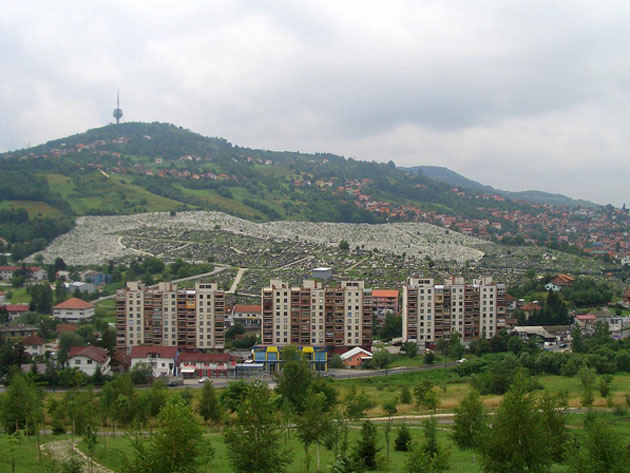
learning about the siege on Sarajevo
Posted on September 13, 2009 at 5:11pm Madrid / 11:11am Cincinnati by Kelly Larbes

Zijo Jusufovic, our Sarajevo guide, said he was taking us to a place that represented hope and the goodness of mankind to him. The car stopped in front of a large old building that was completed gutted out and riddled with bullet holes. The building seemed to have seen more action during the war than any of the others we’d seen before, and like many other buildings outside the city center, it hadn’t been touched since the war. Zijo said it was too expensive to renovate them, too expensive to knock them down and no one was willing to pay for it. We got out of the car and stared at the destruction in despair. Zijo said this used to be a nursing home, and I stood there perplexed, not being able to image why this place was full of hope to him, so he told us its story. The nursing home faced the hills where Serb snipers sat and fired down on the city for nearly four years, but the nursing home was evacuated at the start of the war. No one inside was injured. It may not make sense at first why an empty building would see so much devastation, but that was why Zijo liked this building. Even though many of his countrymen came to horrible deaths at the hands of Serbs, this building reminded Zijo that most Serbs were good people. Many Serbs didn’t want to fight in the war, but not fighting meant risking their own lives and the lives of their family, so they fought. When they received boxes of ammunition from their commanders and were told to use it all, they would fire at the nursing home. They knew it was empty.
Zijo took Jay and I on a tour of Sarajevo on July 4th. It was educational, sad, and humbling. I’ll never forget standing in front of the nursing home, looking in admiration at Zijo, and thinking how amazing it is that someone who has experienced so much hate and sadness is not blinded by it. I’ll probably remember this July 4th more than any other and I wasn’t even in the United States celebrating our Independence Day. I was definitely appreciating it though. Being in a country that fought for its independence less than 20 years ago and in a city that was almost completely destroyed by that fight reminded me how lucky I am to have the privileges of being an American. I’ve never had to live through a war being fought on my home soil. I’ve never had to see my family suffer from malnutrition because there wasn’t enough food in our city. I’ve never had a loved one die from a mortar shell explosion as they left their home. Zijo has. He lost the love of his life, his fiance, to the war. He talked about it matter of factly, as if it was no big deal, but the sadness still lingered in his voice. He said that she made him what he is today: in life, he followed her into tourism classes, and in death, she made him a poet.
When Zijo and his driver picked us up from our hotel in the morning the sky was drizzling and gray. It was appropriate for the day. Zijo was taking us on a tour around Sarajevo to learn more about the war that tour the region apart from 1992-1996. Jay and I felt it was important to get a better understanding of the region we chose to live in. I have also just finished reading Richard Holbrooke’s book, To End a War, which further clarified much that I learned from Zijo and gave me deeper understand of the war. Our tour started in a Jewish cemetery, where gravestones lay in rubble and were pocked with bullets. It continued on to the bobsled track that was part of the 1984 Olympics. We climbed some make-shift stone steps into the bobsled track, which was another victim of the war. It’s basic concrete structure still stood strong, but its beauty from its Olympic days was long gone. Zijo said that the track should’ve been restored and making money years ago. It could be hosting events and be a training home for bobsled teams from countries across the greater region. It was a paradoxical problem though: no one could agree on who should take responsibility, yet neither side would let the other take responsibility because they didn’t want them to succeed making money from its renovation. The two sides were the Republic of Srpska and the Muslim-Croat Federation. Half of the bobsled track stood in the Republic of Srpska and the other half in the Muslim-Croat Federation, so no one knew if anything would ever happen with it.
The Dayton Peace Accord divided Bosnia and Herzegovina into these two ‘states’ with one central government. This was a necessary tool to end the war (as explained in detail in the book, To End a War), yet it created a whole new set of problems. You could compare the sovereignty of Republic of Srpska and the Muslim-Croat Federation to those of the states in the United States, yet taken to the extreme. For example, each entity had its own police force and had absolutely no jurisdiction in the other’s area. According to Zijo, there was little cooperation between the two sides. This lead to silly anecdotal scenes where illegal street vendors would set up shop right by the border, which is just minutes from downtown Sarajevo; they simply moved to one side of the border or the other when police arrived and continued their business in plain site. It also contributed to more serious problems, such as higher crime rates. A thief could steal a car in the Muslim-Croat Federation and then drive a few minutes into the Republic of Srpska and he wouldn’t be pursued.
After leaving the bobsled track, we stopped on the side of the road to check out a sign warning of mines in the area. All of the streets surrounding Sarajevo have been de-mined, but many of the wooded areas still have not. It baffled me that after 13 years much of the country has still not been de-mined. Zijo squatted close to the ground and used a stick to demonstrate how to clear a mine, and then I had a better understanding of the delay. It was a long and laborious process and no one wanted the job. Zijo said that many of the warning signs along the roads were missing because they fetched a high price from tourists in the markets, so people stole them at the expense of others’ safety.
We continued along the road and arrived at an old hotel that was built for the Olympics, though it certainly no longer resembled a hotel. We were told that it was converted into one of the Serbian command centers during the war. Its fate fell to NATO and American bombings when they finally decided to take action in 1995; perhaps the last straw was a mortar attack that killed 22 civilians waiting in line for bread. The view from here was amazing, but it was hard to appreciate knowing that the view is what gave the Serbs perfect position to fire down upon Sarajevo below. Zijo showed us different sniper positions carved out in the earth surrounding the hotel looking down on an area known as Sniper Alley. He told us that sometimes tourists from other countries would come here during the war and pay the Serbs to let them be a sniper for a day and shoot innocent civilians, much like the sick sport in the book, The Most Dangerous Game, though in real life the prey didn’t win. I didn’t want to believe this was true. Zijo said there was video evidence. I still didn’t want to believe it.
We then visited an old WWII memorial that we could tell was once part of a majestic park, but was now overrun with weeds and graffiti. It reminded us of the Vietnam Veterans Memorial, with names of victims etched in the stone. It too was situated half in the Muslim-Croat Federation and half in the Republic of Srpska and may never see repair. Onward from there, we stopped at a very nice hotel in a beautiful park for coffee. Zijo said it was run by the local mafia. By the looks of the hotel and the nice cars in the parking lot, I was pretty sure I believed him. He said he was friendly with them. He said he was friendly with everyone, from politicians to the mafia. He didn’t hate anyone or have any enemies. He clarified, “friendly,” but “not friends.” The rain fell heavily outside as I sipped on some hot chocolate and asked Zijo questions about his life. He was an open book about the loss of his fiancé, his desires to be a history professor, and his devotion to Communism. He preached about the good Communist life where wealth was shared and everyone could live a happy life. It was fascinating talking with a true Communist who was there for height of its power; you don’t come across them often in the United States. He told us he always wanted to be a history professor, but it wasn’t meant to be for him because he wasn’t a good enough Communist nor a good enough Muslim. He was at university during the Communist regime studying history and he loved to ask questions. He was told he asked too many questions. Communists don’t like curiosity, and thus he would never get hired as a professor. After the fall of Communism he went back to school again, but he was told he wasn’t a devout enough Muslim to get hired as a professor now. He admitted it was true; he liked to drink and he liked women too much to be a good Muslim.
The rain subsided and we headed to one of the most fascinating stops of the day. As the city of Sarajevo was completely surrounded for almost four years, the only way out was through a half mile tunnel, which led under the airport to the densely wooded and treacherous mountains on the other side. (A vehicular accident on a small dirt road in these mountains claimed the lives of three American diplomats trying to reach Sarajevo with Richard Holbrooke to begin the peace process after the Serbs would not guarantee them any other safe passage into the city.) During the war the airport was under United Nation control and could solely be used by sporadic humanitarian convoys, so the tunnel was the true lifeline for the city’s civilians, in which not only humanitarian aid, but also weapons and people could pass through (including the late president of Bosnia and Herzegovina, Izetbegovic). The mouth of the tunnel was nestled in the residential neighborhood of Butmir inside a home, which was now a small museum run by the owners who helped coordinate the building and operation of the tunnel. Only 25 yards of the claustrophobic tunnel have been preserved, but just walking into this part gave me a sense of the hard life Sarajevans had to endure, sometimes walking through the tunnel with heavy packs on their back in waste high water after abundant rains. Being surrounded by the crude hand-built tunnel, I felt like I had been transported a hundred years back in time, yet I knew it had been used just fifteen years ago.
Zijo introduced us to Bajro Kolar, the owner, and played the role of a gracious translator as I asked him all sorts of questions while we sat in his garden with a view of the airport in the background. My favorite stories were the ones he told about getting to the other side of the airport before the tunnel was built. Since that airport was controlled by the UN, no one was allowed to cross its land (Considering the situation, on the surface this seemed ridiculous to me, but the situation was very volatile, and had the UN chosen sides without military support, it could’ve been disastrous.), yet Sarajevans had to find a way to get in and out of the city so they resorted to a few creative methods. Guards patrolled the grounds and were responsible for taking anyone they found back to the side they came from. There were motion sensitive lights spread sporadically though the grounds that turned on brightly at night as someone passed trying to make their way to the other side. Some Sarajevans would make the trek carrying a few large pots. If they accidentally tripped a light, they would quickly cover it with their pot and continue on undiscovered in the darkness. Another method used was getting caught on purpose, but with one caveat: They would carefully keep their eyes out for guards and as soon as the saw one, they would turn around and start back towards the side they came from being sure to make just enough noise to draw the attention to themselves. They would then get caught and dragged to the side they were hoping to arrive at in the first place. Bajro chuckled as he shared his stories.
After we left the tunnel, we visited the abandoned nursing home, saw the largest Mosque in the city, and stopped on the bridge that marked the beginning of the siege where two young women were shot and killed by Serb snipers. (Another bridge in town marks the infamous beginning of WWI). We passed by a large cemetery on the side of a hill in the distance that was a grim reminder of the number of casualties the city saw during the war. About 12,000 people were killed, including over 1,500 children, and an additional 56,000 people were wounded. An estimated 85% of the casualties were civilians. The white headstones represented Muslims and the black represented Catholics.
The road past the cemetery led to the 1984 Olympic Stadium and Zijo talked about it with pride. He told us that the stadium held 37,500 people, yet on opening night for the Olympics there were over 50,000 people inside. Everyone in the city wanted to be part of it. At the time Zijo was 18 years old and working as a waiter. He and his coworkers were asked to clean the stadium and their payment was a ticket to opening night. Zijo remembered with wonderment that that night was the first time he ever saw a black person. He said with such innocence how happy it made him.
The last part of our day with Zijo was spent walking through the Old Town of Sarajevo. On one street we passed a Serbian Orthodox Church, a Catholic Cathedral, a Muslim Mosque, and a Jewish Synagogue. We heard the call to worship ring from the tops of all of the Mosques in town. It was beautiful. We visited several stone plaque memorials to large casualties of mortar shell explosions and several unofficial memorials, known as Sarajevo roses. Mortar explosions made a unique pattern in the concrete that almost resembled a bouquet of flowers. Sarajevo roses were the concrete scars that were later filled in with red resin as memorials to people who were killed by those explosions. It had been estimated that on an average day more than 300 shell rounds were fired into the city. The reminders of such ugliness alongside such beauty make up deep layers of the city’s fabric.
As we ended our time with Zijo, I felt like I had been so touched by the day and had such a better understanding of the turmoil that the region experienced, yet I also felt inadequate. I knew (and hoped) that I could never fully understand what the siege must have been like to have lived through. Since I have returned home to Croatia, I have read more first hand stories of heroic bravery and survival. They made me question whether I should write this account because it almost felt like fluff since I wasn’t there in the action like so many others. In the end, I decided to write it because I realized that it wasn’t my story at all, but it was Zijo’s story and Bajro’s story and the story of many who didn’t get to see the war’s end, and it deserved to be told over and over again.
Author’s note: All facts shared in this article are true to the best of my knowledge based on Zijo’s accounts, Richard Holbrooke’s To End a War, and Wikipedia.
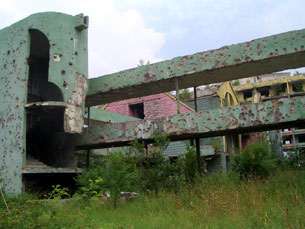
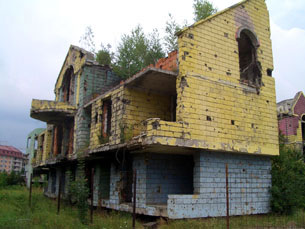
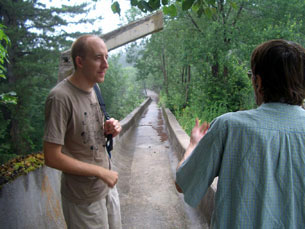
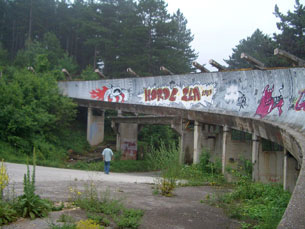
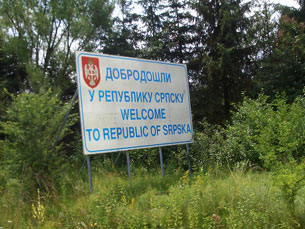
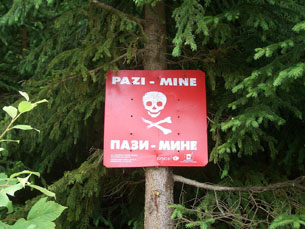
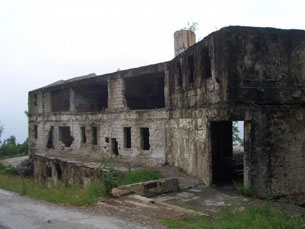
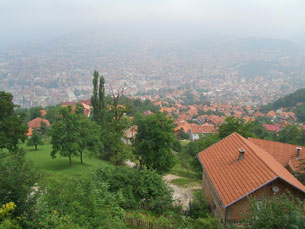
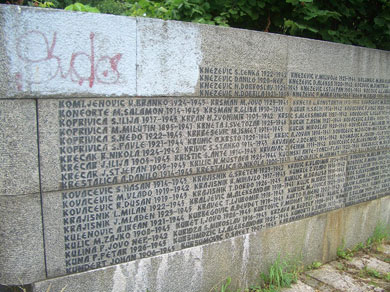
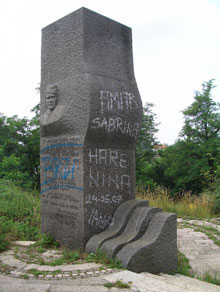
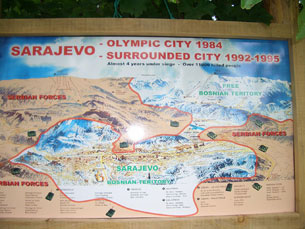
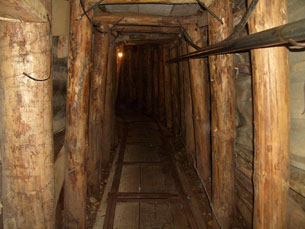
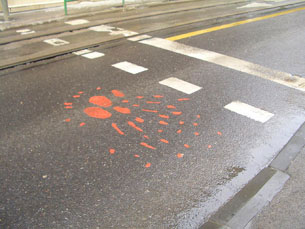
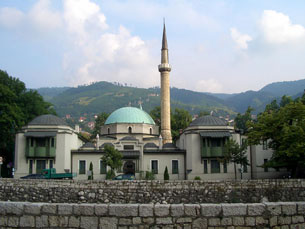
Kelly Im so glad you DID write this this story, as I have learnt so much in reading it thru the tears in my eyes. That you and Jay, with no hereditary connection to these countries, take so much time and care to read, visit, learn and share these accounts is inspiring to me.
Ill share a little story with you… last dec I went to Osijek to visit my father’s sister, whom he hadnt seen for 50yrs. It was the first meeting for me with my aunt, uncle and 2 cousins. They showed me their old house where they lived when Osijek (which is 20km from Vukovar). The house was riddled with machine gun holes, they told me the couch and beds were disintegrated by bullets, there are still bullets embedded in the bathroom tiles… then they showed me the half-basement where the four of them hid for 4days during the worst seige, my cousin Peter was my age… he told me how he held my aunty in his arms as she sobbed, unsure whether they would live or die… And I in my head thought what was I doing at that time, Dec 1990… I was graduating from Architecture at University… unaware of any of this… then my uncle told me as the seige cleared and they slowed resumed their life, but still Osijek was under attack. They had a small land holding some 800m from their now bullet riddled home, where they grew vegetables to sell at the daily market… uncle and aunty walked their every day to tend their crop.. often enroute the Serbs would fire at them, my uncle would lay down to dodge the bullets and he would try to pull my aunty down with him, but my aunty stood tall, and would keep walking, and say “Im not laying down for any Serb”… they survived thru this… They built a new house now, and they still grew their vegetables and sold them at the daily market… in March this year my uncle was walking home from his days work at the vegetable patch and a reckless driver hit him, and he died at the scene… but not from Serb bullets… how sad is that, he lived thru the homeland war, he walked thru those bullets so many days, and he survived them, but this one simple walk home that day, he didnt survive… life is that fragile.
Like you I sat before these people, strangers to me until that day I met them, and felt so inadequate, so pathetic for all the times I complained about stupid, inane things in my life, and thanked God and my parents that I was fortunate enough to have been born in Australia, and that thur that fate, I am now able to enjoy living in my beloved homeland .
Keep on writing… And I’ll be waiting to read 🙂
Paula
Kelly- a sad story and now, I think, you realize how fortunate that we are to never have a war fought in USA. The only destruction that I realize/witness is Sept 11 and I return driving to see you at OU several horurs after the Towers collapse. It was a long sad drive to OU and I was a 1000 miles from NY and not directly involve with 9/11. I will be reading To End a War in Nov while flying to and from Egypt.
Kelly and Jay,
I absolutely love the way you write. You would have done just as well as a journalist or writer if you chose that for a career. I have learned so much thru your blogs. I miss you so much but I can tell that your life has been so enriched since you moved to Croatia. I hope you can continue to find time to write your blogs. Even if people do not reply or leave a comment, I know they have been reading them and more people continue to ask for the website.
Love ya. MOM